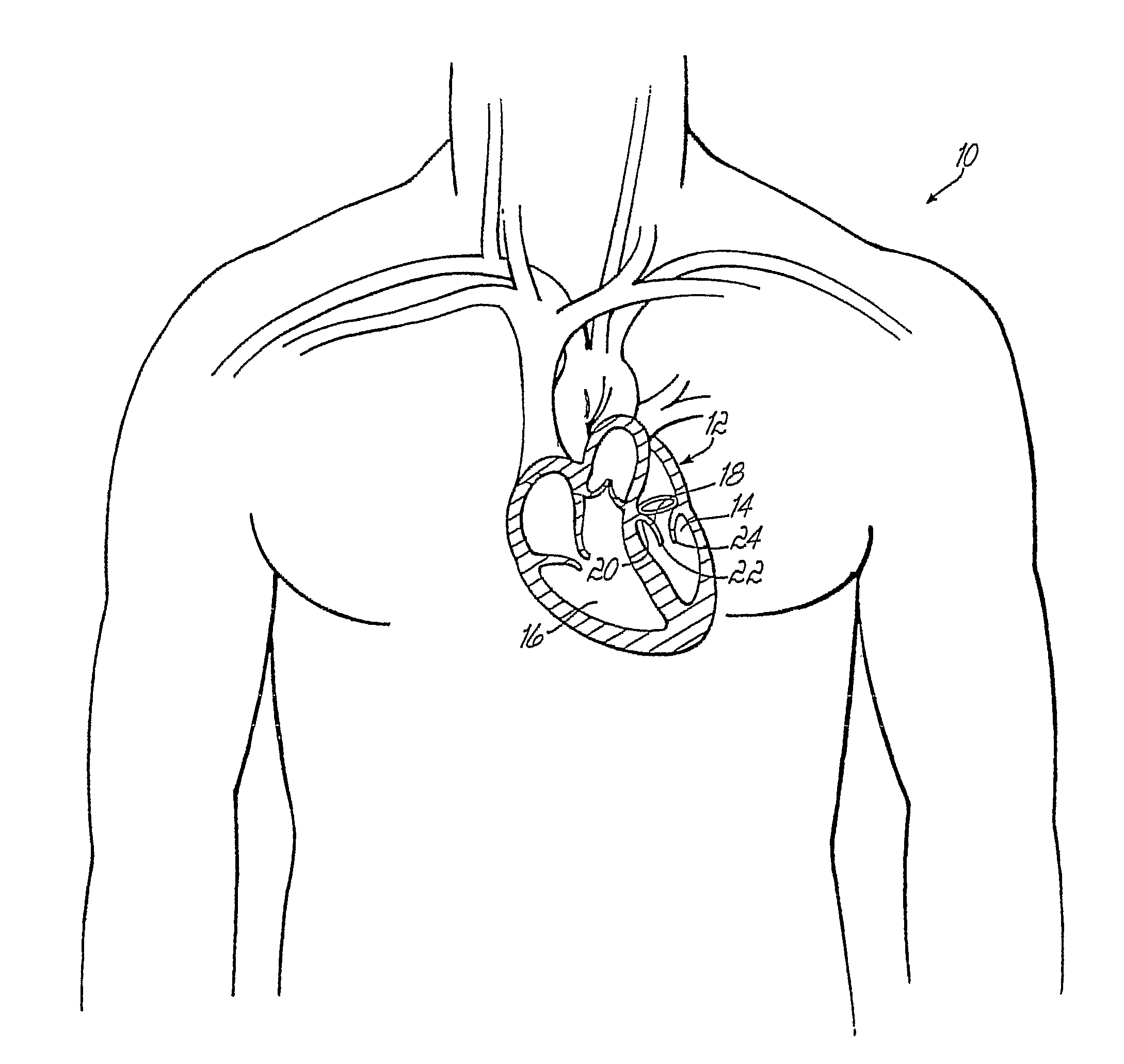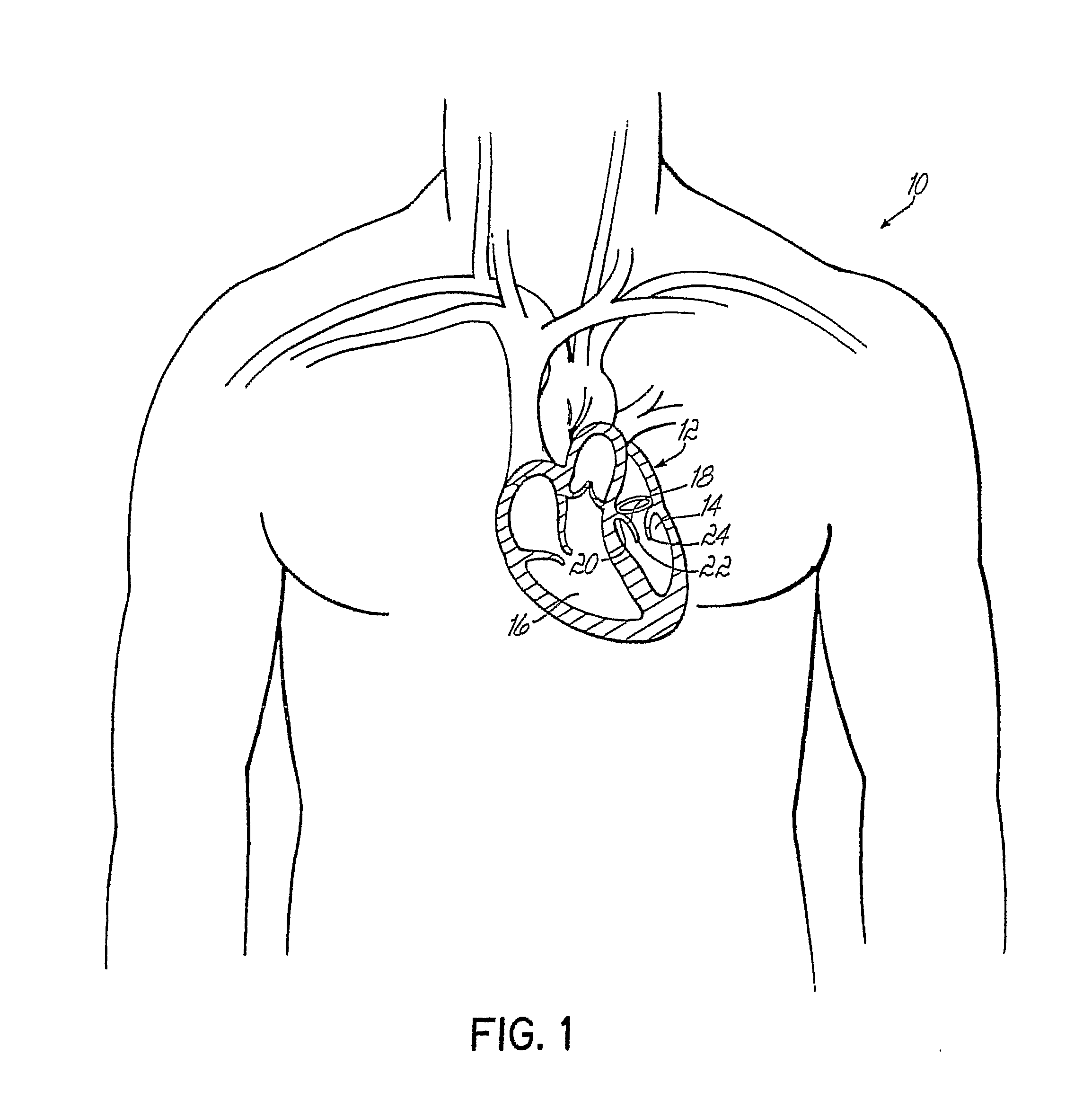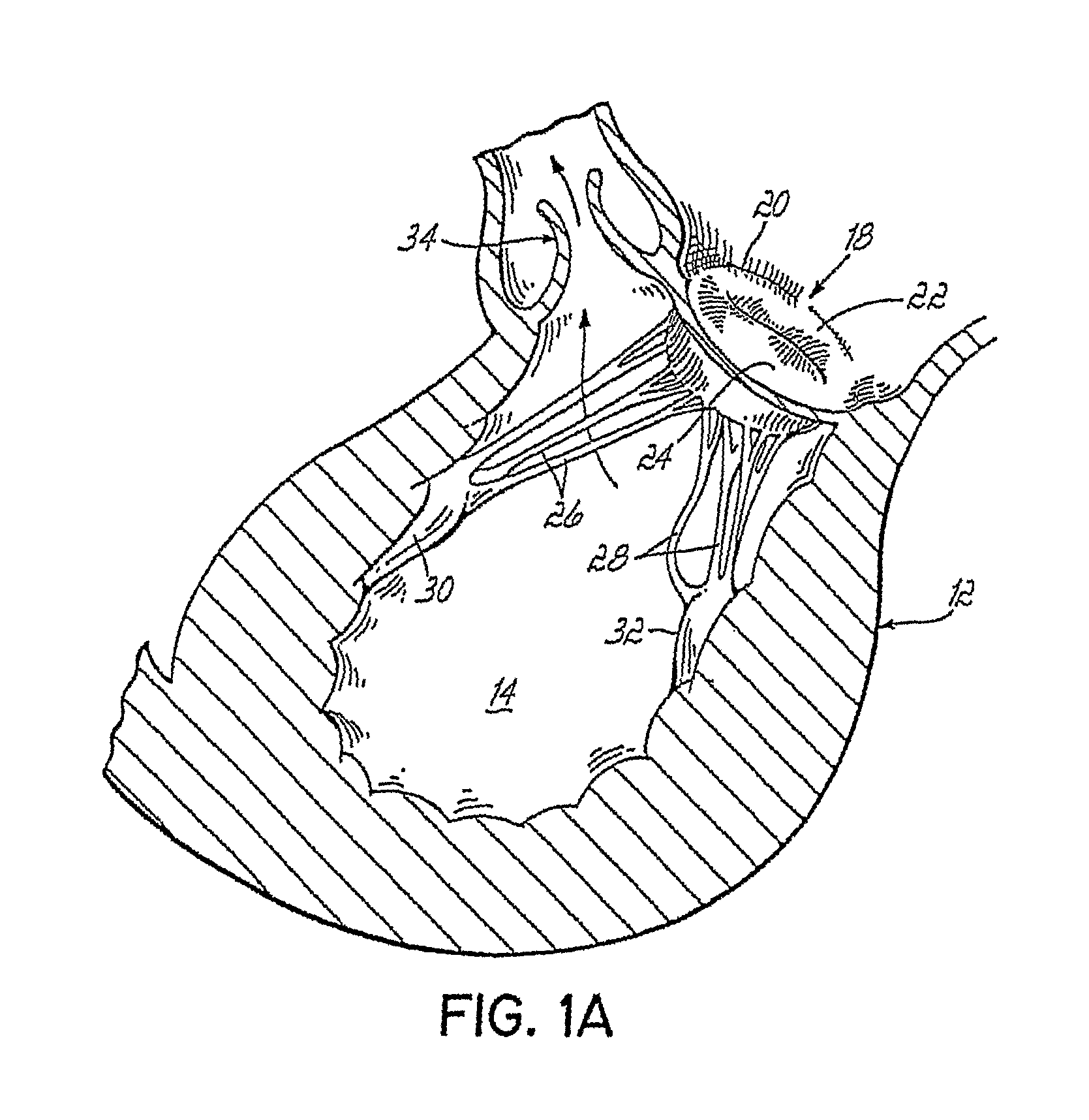Device And Method For Improving The Function Of A Heart Valve
a heart valve and valve support technology, applied in the field of repair of heart valves, can solve the problems of valve leakage, valve support may become nonfunctional, valve may leakage, etc., and achieve the effect of low invasiveness
- Summary
- Abstract
- Description
- Claims
- Application Information
AI Technical Summary
Benefits of technology
Problems solved by technology
Method used
Image
Examples
first embodiment
[0081]A device 40 according to the present invention is shown in FIGS. 2-4. The device comprises a first and a second support member 42, 44. The first support member 42 is continuous with the second support member 44. The first and second support members 42, 44 are formed from a shape memory material, such as alloys based on e.g. Nitinol, copper-zinc-aluminium, or copper-aluminium-nickel, or a shape memory polymer, which may be polynorborene-, polyisoprene-, styrene butadiene-, and polyurethane-based materials and vinyl acetate- and polyester-based compounds.
[0082]The first and second support members 42, 44 have an inactivated shape and an activated shape. In the inactivated shape, the support members 42, 44 are flexible and may be easily deformed. In the activated shape, the support members 42, 44 have a strong strive towards assuming a desired, preprogrammed shape. The support members 42, 44 may enter an activated shape by being exposed to a temperature above a transition temperat...
second embodiment
[0093]A device 140 according to the present invention is shown in FIGS. 10-12. The device 140 comprises a first and a second support member 142, 144. The first support member 142 is continuous with the second support member 144. The first and second support members 142, 144 are formed from a mesh-type or netlike structure, such as stents.
[0094]The first and second support members 142, 144 have an inherent adaptation to a shape change such that an increased cross-section of at least part of the support member 142, 144 is associated with a shortened length of the support member 142, 144. This foreshortening is accomplished in that the mesh-type structure, when expanded in cross-section, pulls the ends of the support members 142, 144 towards each other.
[0095]The support members 142, 144 present a shape change that may be controlled. The shape change will not occur until a force is applied for increasing the cross-section of at least part of the first and second support members 142, 144...
third embodiment
[0099]A device 540 is shown in FIGS. 13-15. The device 540 comprises a first and a second support member 542, 544. The first support member 542 is continuous with the second support member 544. The first and second support members 542, 544 are formed from a shape memory material. The shape memory material is treated to form a first and a second activated shape. The first and second support members 542, 544 may thus assume two different shapes depending on the temperature of the device 540. In an inactivated shape as illustrated in FIG. 13, the device 540 is flexible and may be arranged in an elongate form in order to facilitate introduction of the device to a heart of a patient via a catheter. The device540 may be cooled during introduction in the catheter in order to maintain its inactivated shape. The device 540 may then be heated to a first temperature by utilizing the body temperature. Then, the device 540 is brought to the first activated shape as illustrated in FIG. 14 formin...
PUM
| Property | Measurement | Unit |
|---|---|---|
| shape | aaaaa | aaaaa |
| cross-sectional shape | aaaaa | aaaaa |
| size | aaaaa | aaaaa |
Abstract
Description
Claims
Application Information
 Login to View More
Login to View More - R&D
- Intellectual Property
- Life Sciences
- Materials
- Tech Scout
- Unparalleled Data Quality
- Higher Quality Content
- 60% Fewer Hallucinations
Browse by: Latest US Patents, China's latest patents, Technical Efficacy Thesaurus, Application Domain, Technology Topic, Popular Technical Reports.
© 2025 PatSnap. All rights reserved.Legal|Privacy policy|Modern Slavery Act Transparency Statement|Sitemap|About US| Contact US: help@patsnap.com



